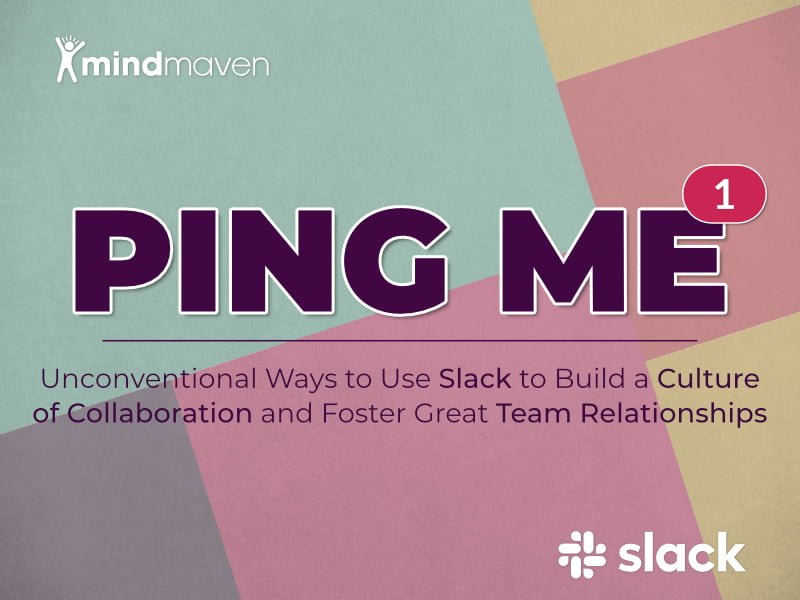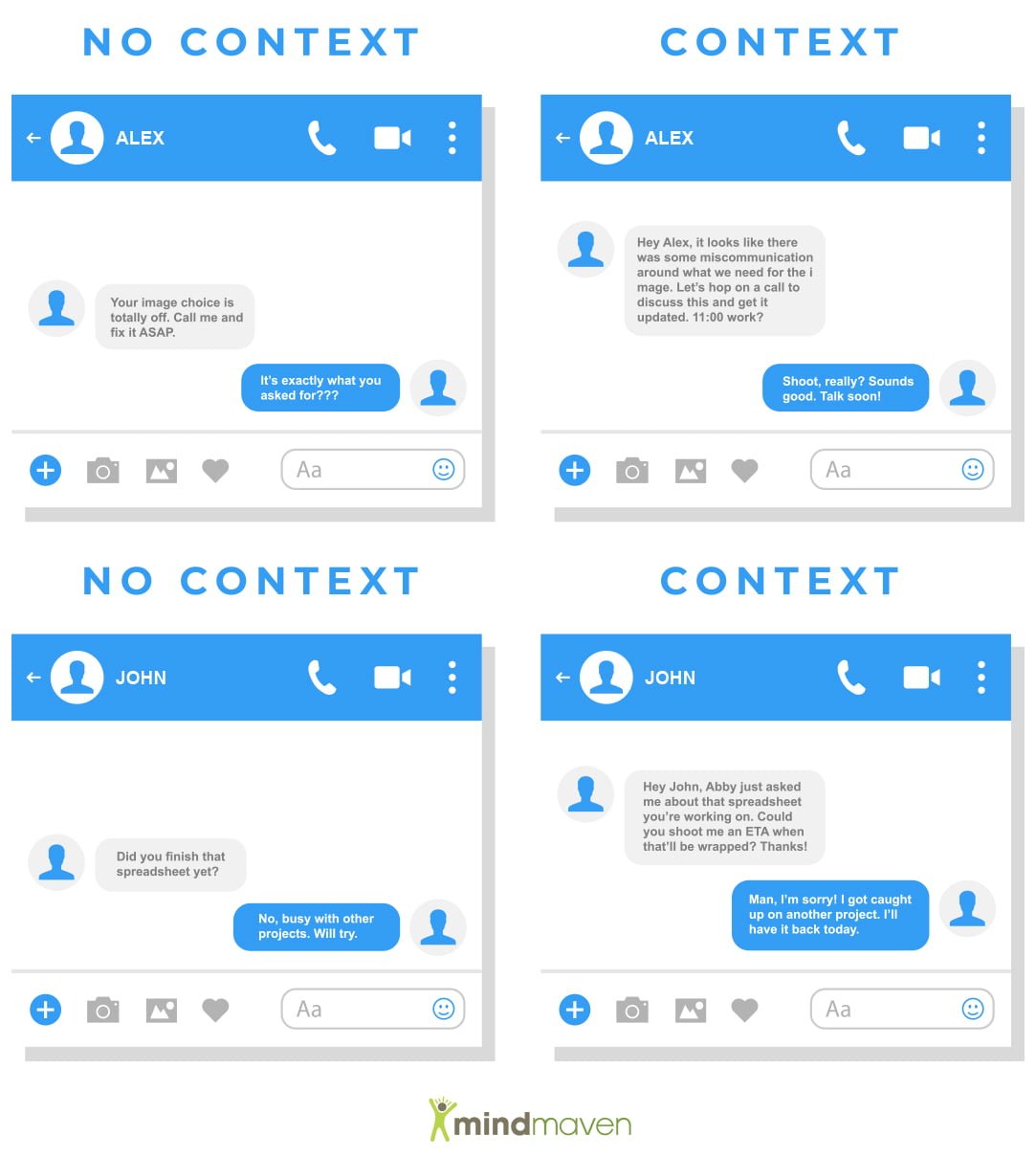Use Slack To Build a Culture of Communication, Collaboration, and Foster Great Team Relationships
The Slack app is often viewed as a powerful and efficient team communication tool—and it is. But there can be an easily overlooked consequence in our endless search for efficiency. Eventually, it often comes at the expense of one of our most valuable assets: Our relationships.
As CEO, your relationship with your team is one of the primary drivers of your company’s culture. When your team feels known, supported, and appreciated, you’ll foster a culture that reflects that. Likewise, if your team feels overlooked, overwhelmed, and taken for granted … Your culture will often reflect that, too.
Tools like Slack are always driving your culture in one direction or the other … The question is, do you know what direction Slack’s taking your company?
Beyond being just a communication tool, Slack can also be a powerful relationship-building tool that allows you as CEO to deliver great experiences to your team that trickle down through the company, driving culture, increasing followership, and combating CEO loneliness.
The best part? Achieving those results is surprisingly easy. Let’s look at a few simple shifts you can make to get more value out of Slack.
#1: Don’t Be That Guy (You Know the Type). Positive Alacrity
Much like you wouldn’t want team members dreading the thought of coming to work, they shouldn’t dread opening any given Slack channel either. After all, there’s likely not much motivation that would derive from opening a computer window filled only with endless to-do’s or tough criticism day-in-and-day-out.
Whether it’s providing feedback or initiating task requests, team members should be aware of their responsibility to keep internal communication through Slack positive and constructive.
One helpful way to keep positivity at the forefront of your Slack workspace is to remember that not every message needs to be a request for something.
After all … Most of us have that person in our lives who only shows up when they want something, right? Those people whose calls or texts or visits you dread, because you know they come with strings attached. Left unchecked, Slack runs the risk of delivering that same type of experience and creating that same sense of dread.
So how do we avoid this?
By keeping in mind that while Slack is primarily a productivity (read: one person asking another person to do something) tool, that doesn’t need to be its only purpose. Slack can be a great conduit to practice what we call Positive Alacrity, or the art of creating micro-experiences that have a profoundly uplifting impact on others.
In short, Positive Alacrity comes down to a simple habit: When you think something positive you genuinely believe, share it—and Slack can be a great way to do exactly that.
And it doesn’t have to be complicated or involved. Here’s a simple example of how you could use Slack messaging to practice Positive Alacrity.
Imagine you and your team are heads-down on a project but, despite the rush, you notice your VP of Sales spending some time training an intern on pivot tables in Excel. Obviously you don’t want to interrupt her, so when you get back to your computer you send her a quick Slack direct message that says something like:
“Hey Anne, I know your workload’s crazy right now so I just wanted to say I thought it was super cool to see you working with Max on pivot tables. No need to respond, just wanted to let you know I really appreciate that you always seem willing to go out of your way to help others.”
Imagine getting a totally unexpected message like that … How would it make you feel? It’d probably make you feel known and appreciated for who you are, and for the little things you do. Moreover, it’d probably encourage you to do more of the same. And all it took was a couple short sentences in Slack.
My challenge for you is twofold:
- Right now, before you read on, open your Slack channels. Think of something someone on your team did that impressed you in the last week. It doesn’t have to be big. Now, send them a short, genuine message letting them know what you appreciate about them and why.
- Make this a daily habit. If you practice Positive Alacrity just once a day in Slack, you’ll be consistently delivering great experiences at scale to your team … And I’d be willing to bet you’ll start seeing others do the same.
Want to learn more about Positive Alacrity and start experiencing the benefits in your life and business? Check out our free 21-Day Positive Alacrity Challenge here!
#2: To Slack or Not to Slack? Efficient Business Communication
Just because Slack is ultra-convenient and always at your fingertips, doesn’t mean it’s always the most appropriate outlet to use for workplace communication.
Sure, the messaging app may feel like an easy go-to, but some topics are best-suited for other channels (such as an in-person meeting or video call) to ensure you’re communicating in a way that aids connection and collaboration, rather than threatening them. Take note of our simple cheat sheet below, for starters.
We suggest saving the following types of discussions for an in-person or private video chat:
- Providing feedback that could be construed as negative,
- Resolving a communication conflict, or
- Providing important details on a project.
When it comes to Slack, these types of topics are perfect for communicating:
- A quick check-in on how a task is coming along
- Coordinating a time to link up in-person or via video chat
- Extending a general “thank you” or positive message
Now at this point, you may be wondering what the big issue is with “censoring” Slack use. Using the channel for added convenience would equal more productivity in other realms, right? Sure; but we must think beyond productivity and into the lines of effective communication and relationship-building.
We stress the power of selective Slack usage because communication is one thing…but Congruent Communication is a whole other ballgame—and Congruent Communication is at the heart of effective collaboration.
To put it simply, Congruent Communication is made up of three key components: Words, tonality, and body language.
Consider this: Have you ever sent a perfectly well-intentioned Slack message, only to have it later blow up in your face? Before you knew it, you probably found yourself taking extra time to clear things up and repair the relationship, all while blaming the other person for misinterpreting your message.
The truth is, miscommunication blow-up is rarely the fault of the recipient, but rather the fault of the sender. It’s likely your message was one that would have required words, tonality, and body language to be most effectively communicated. Why the need for all three?
It’s relatively simple – words only contribute to a mere 7% of the perceived message, while tonality contributes 38%, and body language comes in at a whopping 55%. Congruent Communication is when each of these three elements are in alignment.
So, when it comes to Slack communication – which consists solely of words – you’re in fact only communicating at about 7% efficiency. Pretty ineffective, right? Not to mention, the other 93% is left completely up to the other person to infer – and this can be a slippery slope.
So here’s a quick tip: Instead of leaving the other party responsible for filling in those gaps, take a few moments to ask yourself two questions:
First: “Is Slack the best channel for this message?” If not, consider what avenue might be more appropriate. But sometimes you don’t have a choice … And in those instances, ask yourself a follow-up question: “What extra context can I provide to ensure the message is received as intended?”
Here’s a few examples to illustrate the importance of extra context, borrowed from our deep dive into Congruent Communication:
If you approach Slack with a mindset of Congruent Communication, it’ll become an environment that fosters collaboration and productivity in your team culture, rather than hindering it.
#3: Move the Watercooler Online. Improve Company Culture
Whether online or face-to-face in the office, interacting with others through watercooler conversations is one of the best ways to deliver great experiences to your team.
For reference, watercooler conversations are those quick, often-impromptu chats that happen naturally in the breakroom or walking down the hall. Leveraged correctly, they create opportunities to make your team members feel known as people, rather than just as employees.
But just because they typically take place in-person doesn’t mean that’s the only way they can happen: Consider creating a dedicated #watercooler channel in the Slack app to create an environment in which friendly conversations thrive and deeper connections begin. This can be especially valuable if you have remote team members who you wouldn’t otherwise have traditional watercooler conversations with to build employee engagement.
Just know you’ll probably need to take the lead in this new Slack channel at first to kickstart engagement and make others feel comfortable. Here’s a few ideas for the types of chat content that would be perfect for a #watercooler channel:
- Sharing funny, relatable memes,
- Asking for lunch recommendations,
- Chatting about weekend plans,
- Friendly jibes or celebrations about last week’s game, or
- Highlighting something great someone did.
While these examples might seem simple, keep and mind that they’re just the beginning. By interacting with and browsing the #watercooler conversation, you’ll probably learn a lot about your team in a way that opens the door for future interactions.
Here’s an example from one of our clients, inspired by an in-person watercooler conversation that’s been adapted to represent the digital environment:
Rob, the CEO of a rapidly-scaling startup, was scrolling through his #watercooler channel when he saw a conversation about his teams’ lives before joining his company. One response in particular stood out: Alice, one of the newer team members, shared that she joined after taking two years off her career to care for her ailing mother—and that although the decision was scary, she doesn’t regret it because it brought her and her mother much closer together.
Her sacrifice really made an impact on Rob, and he was deeply moved by Alice’s dedication to her family. In response to her Slack message, Rob sent her the following email:
Hey Alice,
I just read your Slack message about taking two years off your career for your mom and just wanted to write you a quick note and let you know that your decision to place your family before your career really, really touched me. I think it says a lot about you as a person.
As you probably know, one of the pillars of our culture here is taking care of one another, and you showed me you’re a living testament to what that looks like. I’ve got a feeling you and your story will help solidify that part of our workplace culture.
Thanks for being here, and for all you bring to the table. See you around the #watercooler!
Cheers,
Rob
Imagine the impact an email like that would have on Alice … And that’s just one interaction. If you were able to deliver an experience like that a few times a month, the impact that’d have on morale, culture, and engagement could be huge.
Here’s a couple more ideas on how you could leverage the Watercooler channel:
- Learning someone’s favorite football team via the Watercooler channel opens the door for a highly-personalized gift down the line (like tickets to a game or their favorite player’s jersey).
- Learning how someone spends their weekend gives you insights into who they are outside of work and creates opportunities to find common ground.
The list of potential interactions is nearly limitless. I hope you’re beginning to see how simple watercooler conversations can be leveraged to build real and meaningful connections you’re your team members—all the while fostering a culture of collaboration and communication.
Want to learn more about leveraging watercooler conversations (offline and off)? Head over to our How to Become a Legendary Leader (in Just 5 Minutes a Day) blog post. And in the meantime, how about getting that Slack #watercooler channel up and running?
Picking Up the Slack
At the end of the day, the Slack Platform can be a simple-but-powerful way to drive culture and build relationships with your team … And if you’re already using Slack anyway, what do you have to lose?
As a quick recap, here’s three things you can do today to transform Slack from a pure communication tool to a powerful collaboration conduit.
#1: Promote Positivity: Use Slack to practice Positive Alacrity one per day. Action item: Think of something relatively simple someone on your team did that impressed you in the last week, and send them a short Slack message sharing your thoughts.
Want to learn more about mastering Positive Alacrity? Read Want a Happier, More Fulfilling Life? 75-Year Harvard Study Says Focus on This 1 Thing.
#2: Communicate Congruently: Try to avoid using Slack for sensitive topics (and, when necessary, pad your messages with extra context). Action item: Think back on a Slack message or email you sent in the past that was misconstrued, then ask yourself: Would extra context have helped deliver the message, or should it have been communicated using another format?
Want to learn more about mastering Congruent Communication? Read Eliminate Miscommunications Once and For All by Mastering the Art of Congruent Communication.
#3: Move the Watercooler Online: Use a special Slack channel to encourage non-work-related conversations (and use those conversations to build deeper relationships with team members). Action item: Create a #watercooler channel in Slack and make your first post.
Want to learn more about mastering Watercooler Conversations beyond Slack communication? Read How to Become a Legendary Leader (in Just 5 Minutes a Day).



